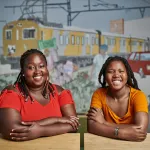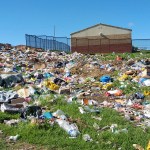SPOTLIGHT: IN DEPTH
What happens to people in South Africa who have rare diseases?

Some experts say improved training and integration care strategies in SA’s proposed National Health Insurance system could lay the groundwork for improving the response to rare diseases.
Little is known about the number of people in South Africa who are living with rare diseases. In fact, there is no recognised definition for rare disease in the country, contributing to inadequate record-keeping and very little data on prevalence, treatment options and support structures.
This is compounded by a lack of capacity in both the public and private sectors to recognise and test for rare diseases and the impossibly high price tag associated with some of the medicines available to treat them, which often are not available in SA.
Together, this creates a burden of disease that seems to be quietly and systemically ignored. However, some experts say improved training and integration care strategies in South Africa’s proposed National Health Insurance (NHI) system could lay the groundwork for improving the response to rare diseases.
“The NHI is an approach that may address imbalances and ensure equity,” says Dr Helen Malherbe, doctoral research fellow at the KwaZulu-Natal Research Innovation and Sequencing Platform (Krisp). “We need appropriate strategies and political commitment because right now we’re not meeting the needs of this population.”
What is a rare disease?
A rare disease is a health condition affecting a small number of people compared with other diseases commonly identified in the population. According to the World Health Organization (WHO), there are between 5,000 and 8,000 known rare diseases worldwide, affecting an estimated 400 million people.
Some are easily recognised, such as cystic fibrosis or Lyme disease. Many others are less known, such as trisomy 18 or cat eye syndrome. There are rare diseases affecting the brain, muscular system, metabolism, heart, blood, lungs, kidneys, and other organs and systems.
According to the advocacy group Rare Diseases South Africa (RDSA), about 3.6 million people in SA have a rare disease.
Prevalence figures, however, are not definitive. In South Africa, and elsewhere, there is no agreed definition for rare disease. Indeed, one study identified 296 definitions for rare disease from 1,109 international organisations, including South Africa, the UK, US, European Union and Japan. According to the study, rare diseases are defined as conditions affecting from five to 76 patients per 100,000 people.
Further complicating this is the fact that 70% of rare diseases are caused by genetic factors and are considered congenital disorders. Many of these genetic diseases manifest during a person’s life and are not identified at birth.
“If we aren’t able to quantify rare diseases in SA, then cases are going to go undiagnosed, the clinical features aren’t going to be characterised, and the knowledge won’t be appropriately shared,” says Malherbe, who is also the director of research and epidemiology at RDSA.
Lack of capacity
Jean-Mari van zyl-Smit is possibly the first adult woman in South Africa to be diagnosed with Pompe disease. An inherited and often fatal disorder that affects the heart, skeletal muscles and respiratory system, it reportedly occurs in around one in 40,000 people.
With plummeting oxygen levels that sent her to hospital on her 21st birthday, Van zyl-Smit didn’t initially know she had a rare disease.
“The doctors did all the tests, but they couldn’t figure out what was wrong,” she says. Her condition progressed so that she could only breathe with the help of a ventilator.
“They said I would never live without the machine,” she says. She became severely depressed and attempted suicide before seeking help from a psychiatrist.
In 2013, Van zyl-Smit was contacted by German doctors researching rare diseases.
“They wanted to do tests and send them overseas. That’s when they told me I have a rare disease,” she says.
In South Africa, the ability to diagnose a rare disease is hindered by a lack of capacity and resources, according to research, putting the time to diagnosis for rare diseases in general higher than the estimated 5.5 to 7.5 years in high-income countries.
“There is still low recognition of genetic disorders among specialists. And when they are recognised, testing remains expensive and requires sophisticated levels of training which are relatively limited,” says Professor Karen Fieggen, a medical geneticist at the University of Cape Town.
She says costs, skills, training and human resource factors are all barriers to effective testing and diagnosis. But the rationale to build an effective system is solid.
“We have capable people and expertise to build this system, but until you invest in it, it won’t be big enough to be self-sustaining,” she says.
Posts not available
Fieggen acknowledges that resources are stretched in the public sector, where specialists who carry out genetic testing for rare diseases must meet the needs of a larger part of the population. However, she notes, “There’s no guarantee you’re better off in the private sector.”
“There are very few genetic referral options and none of the medical geneticists are kept in work full-time,” she says. In Cape Town, for example, she says that until recently all patients seeking genetic testing had to come to the private sector. “We have the capacity to train seven specialists a year, but posts aren’t available for them to take,” she says.
According to 2021 figures from RDSA, there is only one medical geneticist in the national public healthcare system for every 4.5 million people in the country. This falls far short of the recommended 21 per two million people recommended by the WHO.
There is also a stark disparity in where these specialists work. Fieggen says there are pockets of genetics services available in the Western Cape and Gauteng but limited access elsewhere. Data from RSDA supports this, showing just one medical geneticist in KZN for a population of 11 million people. For patients in the remaining six provinces, genetic specialists are not available.
“If you’re outside of certain areas, your chance of getting a genetic diagnosis drops substantially because these aren’t areas where rare disease is talked about and referral pathways aren’t in place,” she says.
Burden of disease
One explanation for this gap is the heavy load already on South Africa’s healthcare system. The WHO says the country faces a significant burden of disease resulting from communicable diseases such as HIV and TB, and non-communicable diseases such as hypertension and diabetes.
While training of healthcare professionals must focus on these public health needs, Fieggen says a sensible approach to rare diseases is needed.
“It doesn’t help to throw huge resources at something that will have minimal management impact,” she says. “But the way in which rare diseases have been relatively ignored isn’t constructive.”
Facilitating the recognition of rare diseases and referral pathways in physician training may make a difference.
“One thing that could be instilled in training is to recognise that if things are atypical in their presentation, there should be a discussion with a referral centre,” says Associate Professor Ian Ross, a senior consultant endocrinologist at UCT and Groote Schuur Hospital.
Ideally, he says, there should be centres of excellence that deal with rare disorders. “Because there is a need. Each person has the right to healthcare, and that speaks to the marginalisation of some individuals because they don’t always have access.”
The most expensive drug in the world
Zolgensma is a promising once-off treatment that could improve the quality of life for Tasnim Jadwat’s daughter. Diagnosed at nine months old with spinal muscular atrophy (SMA), a genetic disease causing the muscles to waste away, the initial prognosis was heart-breaking.
“We were told to take her home, and not to even bother with vaccinations because she only had three months to live,” Jadwat says. “We were ready to give up.”
But time went on, and their daughter stayed with them. She is now 12 years old. Maintaining her health has only been possible with specialised medical equipment purchased from abroad, as no medications were available for her condition. That was until 2019 when the family learned about the US Food and Drug Administration’s approval of Zolgensma, a form of gene therapy.
Produced by the pharmaceutical company Novartis, Zolgensma appears to stop the progression of SMA and to sustain remaining muscle function. But it comes with a hefty price. At $2.1-million (R30-million) per treatment, it’s the most expensive drug in the world.
Zolgensma is not available yet in South Africa, but it can potentially be obtained through Novartis’s “compassionate care” programme. The company holds a lottery for public healthcare patients where, if selected, one accesses the treatment free. “Can you imagine how it feels as a parent to gamble with your child’s life and hope?” asks Jadwat.
Access to the drug could, however, also be arranged through a successful section 21 application with SA’s health product regulatory authority, Sahpra. But this would require significant time, effort, and financial resources from the Jadwat family and their clinicians.
“Options like this reduce the burden of rare diseases on the healthcare system for the few patients they treat, but lobbying to get them is difficult, particularly if you’re the parent of a chronically ill child and have no energy left to fight,” says Kelly du Plessis, CEO of RDSA.
Treating disease-by-disease
Approved treatments are currently available for only 2.5-5% of rare diseases, according to studies. Many of them, like Zolgensma, are unregistered for use in South Africa and are prohibitively priced.
Du Plessis says these drugs are not on the essential medicines list because of the small group of patients they would serve. “The essential medicines list is dedicated to treatments that are procured in large numbers. Rare diseases will never be mass-market drugs.”
However, she notes that not being on the essential medicines list doesn’t exclude some drugs from being purchased.
“In some cases, a lot of buyouts could be purchased rather than the drugs being available across the board,” she says. A drug buyout is the process by which a government hospital buys a product not available on the essential medicines list.
For example, a hospital pharmacy may make a specific purchase request, making the medication available only via that one hospital. The difficulty is this approach is subjective, Du Plessis says.
“Your ability to access the product is not equal across the board. One hospital pharmacist may ensure this product is available for those who need it, and another pharmacist doesn’t by simply not making that purchasing decision.”
The result of these haphazard approaches is that treatment is achieved on a disease-by-disease basis. “Ultimately, this is the problem,” Du Plessis says. “We want some form of equity across the board.”
Draft policy framework
In an effort to achieve that equity, the RDSA held a Rare Disease Symposium on 25 August as part of the Rare Diseases Access Initiative. The event invited feedback on a draft policy framework from stakeholders including researchers, public healthcare practitioners, medical aid scheme representatives, and policymakers.
“The aim was to get everyone’s inputs so we can build momentum and eventually seek approval from government for this policy strategy,” says Malherbe.
Among the framework’s recommendations is an agreed definition for rare disease in SA, specifically as a condition affecting one in 2,000 people or fewer. Another recommendation is to include rare diseases in the NHI benefit package.
The NHI Bill proposes the establishment of a Benefits Advisory Committee which “must determine and review the healthcare service benefits and types of services to be reimbursed at each level of care at primary healthcare facilities and at district, regional and tertiary hospitals”. It is presumably this committee that will decide whether specific treatments for rare diseases are covered by NHI or not. Such a committee might draw on advice from a Health Technology Assessment unit that forms part of the NHI structure. Exactly how this process will work in practice is unclear.
In opening remarks delivered at the symposium, Nicholas Crisp, South Africa’s acting director-general for health, said the NHI was working towards social solidarity and equity.
“Where the only thing that matters is that if you have an illness that needs care, you get that care because of the need for care, not because you have money in your pocket or because you live in some particular geographical location.”
Crisp stopped short of agreeing to specific rare disease funding. The NHI, he said, would not ring-fence the budget.
This may be a point of contention for groups like the RDSA and other experts. “From an advocacy perspective, this is a key point we need to poke and get leverage around,” says Malherbe.
And for good reason. According to Ross, if the NHI is doing away with private health insurance, then it will be critical to earmark funding for rare disorders which require expensive drugs that the public health sector can’t afford.
“If they are going beyond providing access for people who are not on medical insurance, then they have to take into consideration that equally important facet – which is covering for those who cannot afford it,” he says. DM/MC
This article was produced by Spotlight – health journalism in the public interest.




















 Become an Insider
Become an Insider
Comments - Please login in order to comment.